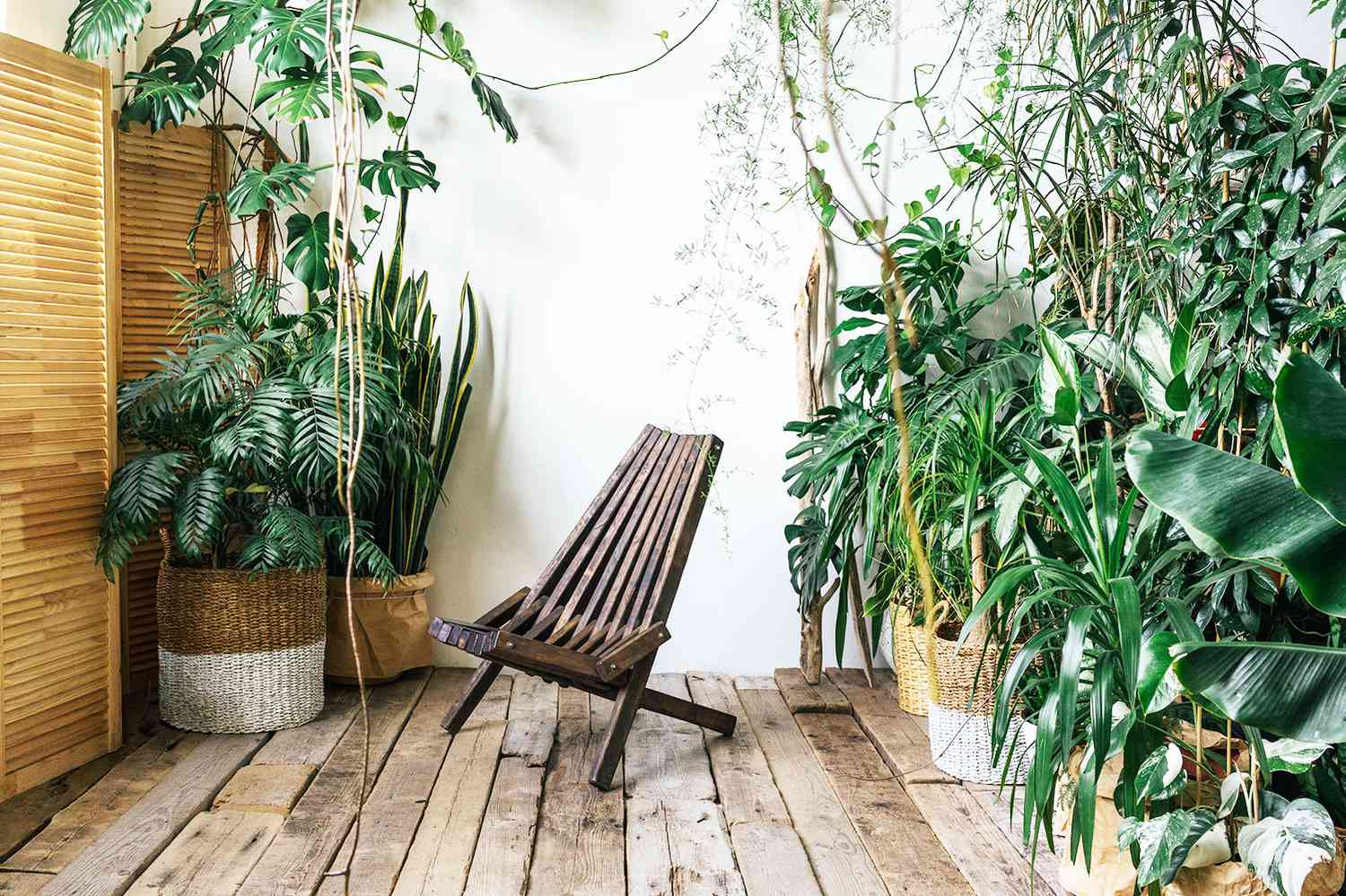
If sustainably minded design was once considered a fad, it’s become clear in recent years that it is only a matter of time before it’s the industry standard. Interior designers and builders continue to find new ways to innovate at every level of design to maximize efficiency, reduce waste, and protect the environment. We asked expert interior designers to shed some light on emerging sustainable home design and renovation trends—it’s safe to say these techniques are as chic as they are environmentally friendly.
Biophilic Design
A design concept marked by bridging the gaps between people and the nature surrounding their homes, biophilic design is quickly gaining momentum in the world of home renovation and interior design. “Integrating natural elements like living walls, indoor plants, and natural light sources not only enhances aesthetics but also promotes a healthier indoor environment by improving air quality and connecting occupants with nature,” says Kerrie Kelly, former American Society of Interior Design (ASID) National Board Chair.
The use of materials plays a key role in biophilic design and sustainable design as a whole. “We can expect to see more use of natural materials like bamboo, cork, straw, and wood,” says interior designer Wendy Glaister. “The incorporation of airy greenery into a space can also go a long way.” These materials help capture a natural experience that engages all the senses while remaining indoors.
Sustainable Materials
Martha Stewart
Across every aesthetic, home décor style, and color palette, it’s becoming increasingly clear that sustainable materials are here to stay. “Textiles like organic cotton, wool, and recycled fabrics are more popular for upholstery, curtains, and bedding due to their low environmental footprint and are often sourced from ethical suppliers,” says Glaister.
“Using renewable and recycled materials such as reclaimed wood, bamboo flooring, recycled glass countertops, and eco-friendly paints and finishes not only reduces environmental impact but also adds unique character and charm to spaces,” says Kelly.
Another little-known fact is that natural materials are among the most durable and easy to care for, even when compared to performance fabrics and stain-resistant textiles. “For example, wool area rugs are some of the most easy-to-clean materials one can use in a home,” says Glaister.
Smart Window Coverings
Denis Chevchuk / Getty Images
There’s a lot to be said for relying on natural light whenever possible, and smart window coverings make it a lot easier to do just that, enabling a “set-it-and-forget-it” approach.
“Utilizing window coverings with remote or sensor-controlled functionality allows for optimal natural light and shading based on time of day, season, and occupancy, reducing the need for artificial lighting and cooling/heating systems,” says Kelly. The result? Better energy efficiency, optimal indoor comfort, and a lower electric bill.
Adaptive Reuse
Martha Stewart
Instead of building new homes from the ground up, repurposing older structures for new use is an emerging trend with no sign of slowing down. “Designers and builders alike are finding that keeping buildings with ‘good bones’ is more beneficial than starting from scratch,” says Glaister.
The practice of adaptive reuse relies on employing old materials to build a modern home. “There are practical and emotional wins where this is concerned,” Glaister says. “In the state of California, where I practice the most, it pays to use a portion of the existing footprint. Homeowners can save on permitting costs, septic and sewer costs, utility set-up costs, etc. if they can incorporate some portion of the existing structure. And emotionally, a nod to the history of the space can make the home feel more rich and established.”
Passive Design Strategies
Some of the most sustainable design techniques are passive and help achieve efficiency while reducing environmental impacts. “Implementing passive design techniques, like strategic orientation, proper insulation, and efficient window placement maximizes natural heating, cooling, and ventilation, reduces reliance on mechanical systems, and minimizes energy consumption,” says Kelly.
The seemingly simple—and often hard-to-spot—choice to redesign and reposition windows has transformative power in terms of sustainability, not to mention aesthetics. “I don’t think I’ve done a project in over five years where I haven’t made changes to the window plan,” says Glaister. Passive and biophilic approaches to design frequently go hand in hand. “Being able to see outside, have sunshine streaming in, and have a feeling of a deeper connection to the out-of-doors can’t be emphasized enough.”
Low-VOC and Natural Paints
Color isn’t the only factor to consider when choosing paints. Choosing environmentally friendly paints is equally important. “The use of low-VOC (volatile organic compounds) and natural paints contributes to better indoor air quality and is less harmful to the environment compared to traditional paints,” says Glaister. Materials that contain a high volume of VOCs are detrimental to the environment, and they’re commonly found in all types of household products, making them harder to avoid than one might think. Natural paints and those with low-VOC content are slowly but surely becoming the norm.
Water Conservation Features
Bryan Gardner
Conserving water is essential for the health of the planet, and designers are heeding the call. “Incorporating water-saving fixtures like low-flow faucets, toilets, and rainwater harvesting systems, along with drought-tolerant landscaping and permeable surfaces, helps conserve water resources and promotes sustainable water management practices,” says Kelly. Often, opting for these sustainable versions of essential household and garden fixtures isn’t any more expensive and will save you money on your water bill and landscaping costs.
